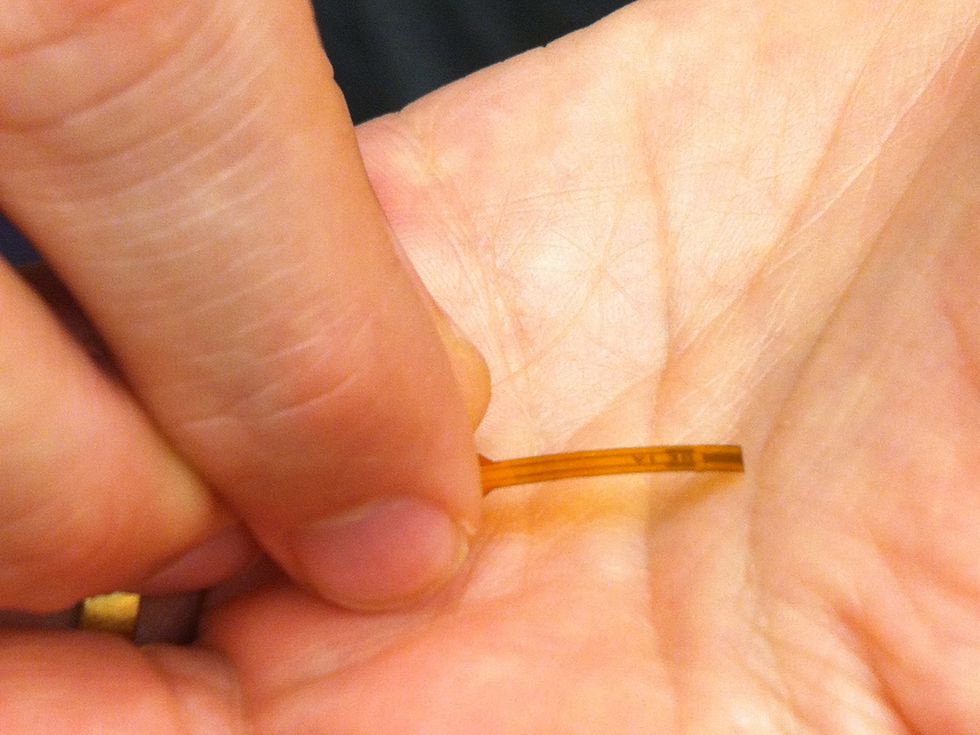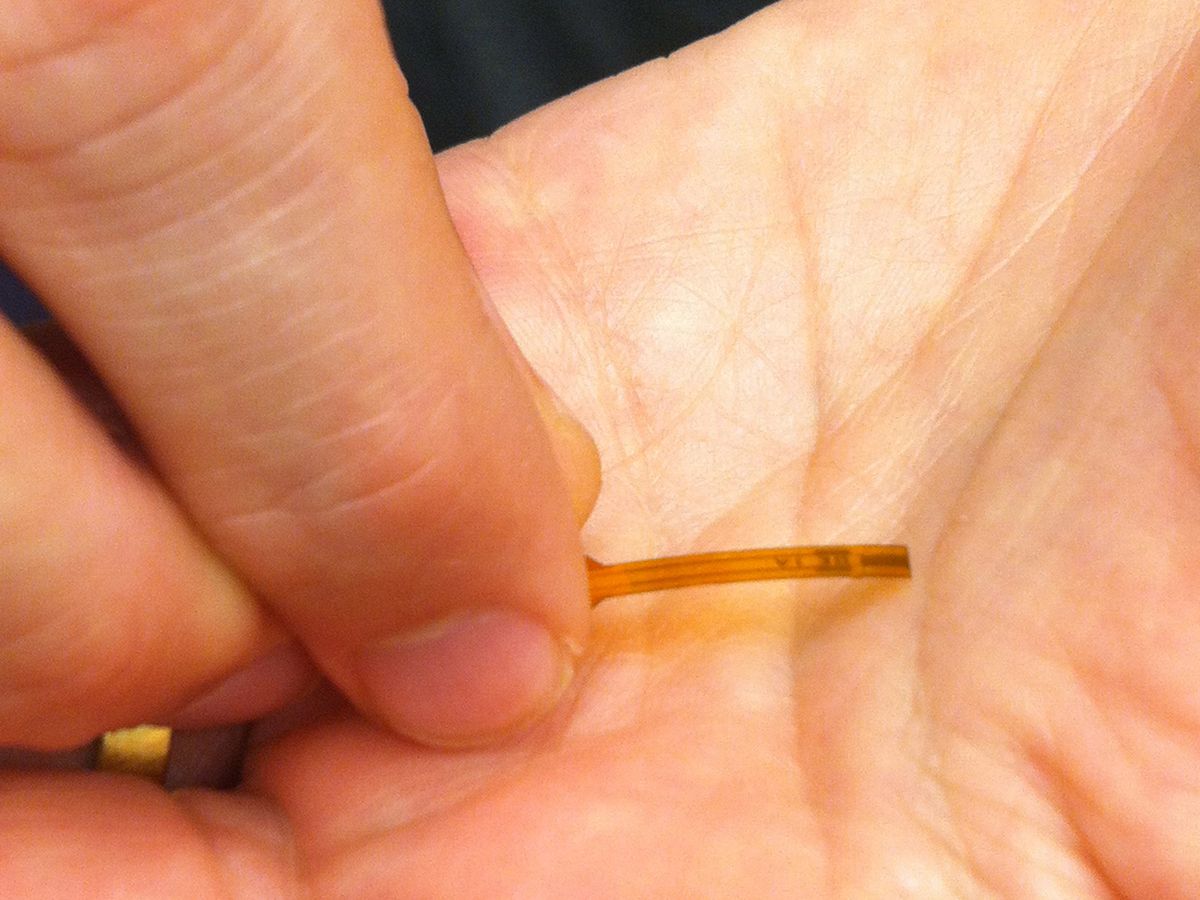
6 September 2012—New battery chemistries might help to get more electric vehicles on the road. But we still haven’t squeezed the optimum performance out of the designs we have, like the good old lithium-ion battery.
With funding from the Advanced Research Projects Agency–Energy (ARPA-E), two coalitions of companies are now making tiny, lightweight sensors that could make lithium-ion batteries smaller, cheaper, and safer. The devices, which are made of optical fibers or thin-film materials, could be integrated inside a battery, where they could spot tiny temperature jumps that could lead to overheating (and, potentially, fire) or help to precisely estimate how much juice is left in the battery.
Battery packs in today’s plug-in and hybrid-electric vehicles contain hundreds of individual battery cells wired together and coupled with control electronics. Sensors measure voltage, current, and temperature from outside the pack, relaying that data to the battery management system. But that doesn’t reveal everything that’s going on inside the pack—for example, the exact amount of charge left in a single battery cell or if the middle of the battery pack is hotter than usual.
“Designers have to overprovision to compensate for that uncertainty, so batteries might be sized twice as big as the energy needed for a vehicle,” says Rob McHenry, a program manager at the Palo Alto Research Center (PARC), in California, which ARPA-E has awarded more than US $4 million. “There is a long delay between when a fault occurs and [when it] has progressed enough that you see evidence externally.” If each cell inside a battery pack could be carefully monitored, it would help size a battery to better match its application, cutting weight and cost, while making it more reliable, he says.
Measuring variables inside a battery is difficult because of the harsh environment of corrosive electrolytes and high temperatures. “You want something that’s small, low cost, and immune to electrostatic discharge,” says Ajay Raghavan, the scientist leading PARC’s sensor project. So PARC researchers have turned to optical-fiber sensors that could be embedded inside each battery cell.
Fiber sensors are limited by the bulky, costly detectors used to read the tiny shifts in light wavelength resulting from changes in the battery cell’s temperature, length, or chemical environment, which alter the fiber’s refractive index. The PARC team has developed a wavelength-shift detector about the size of a quarter. A single detector could handle optical fibers from many battery cells, and it should cost only a few hundred dollars, as opposed to $10 000-plus for conventional detectors, which require lasers and charge-coupled device arrays. The new detector consists of an optical filter that converts wavelength shift to a change in the position of the light beam falling on a tiny photodetector array. The fiber-optic sensors can read wavelength shifts as small as 50 femtometers. This means they could pick up subtle flicks in temperature, chemical state, and other parameters in a cell.
One of the project’s goals is to figure out the best set of internal variables to monitor in a battery, says Raghavan. The researchers are also developing intelligent algorithms that would read the raw data from the sensors and translate it into relevant numbers for a car’s battery-management system. “Say cell 5 is heating up,” Raghavan explains. “The fiber-optic sensor would relay that information to the management system, which would reduce current in the cell or shut it off, and would alert the operator so that the cell could be changed.” Battery maker LG Chem Power, a partner on the project, will test the fiber-optic sensors in real batteries.
GE Global Research is also developing battery-monitoring sensors with a $3 million award from ARPA-E. GE already sells temperature sensors for car batteries, but the new thin-film sensors are one-twentieth the thickness, says scientist Aaron Knobloch, who is leading the new work. Whereas today’s temperature sensors sit at the edge of a battery pack, the new ones are thin enough to slip in between individual battery cells inside the pack, where they would read temperature and surface pressure “and understand how the behavior relates to state of charge and health.”
Scientists at the University of Michigan will develop advanced software models that will crunch the GE sensor data to predict battery life and health. They will also use those models to determine the ideal number of sensors needed for a battery and the best locations for those sensors. “We don’t want sensors all over the battery pack, because that would drive cost,” Knobloch says. Finally, researchers at Ford will test the sensors on their cars in realistic conditions.
Both the PARC and GE projects have plenty of unknowns, making them good fits for ARPA-E, which funds high-risk research with potentially large payoffs. “No one has looked at pressure as a [battery health] parameter,” says Knobloch. “At this point we don’t know what we don’t know, but we’re hoping to make an impact on battery performance.”
About the Author
Prachi Patel is a contributing editor to IEEE Spectrum. She reported on how new technology will improve forecasting and monitoring droughts in the September 2012 issue. You can also hear her on Spectrum Radio and Public Radio International’s “Living on Earth.”
